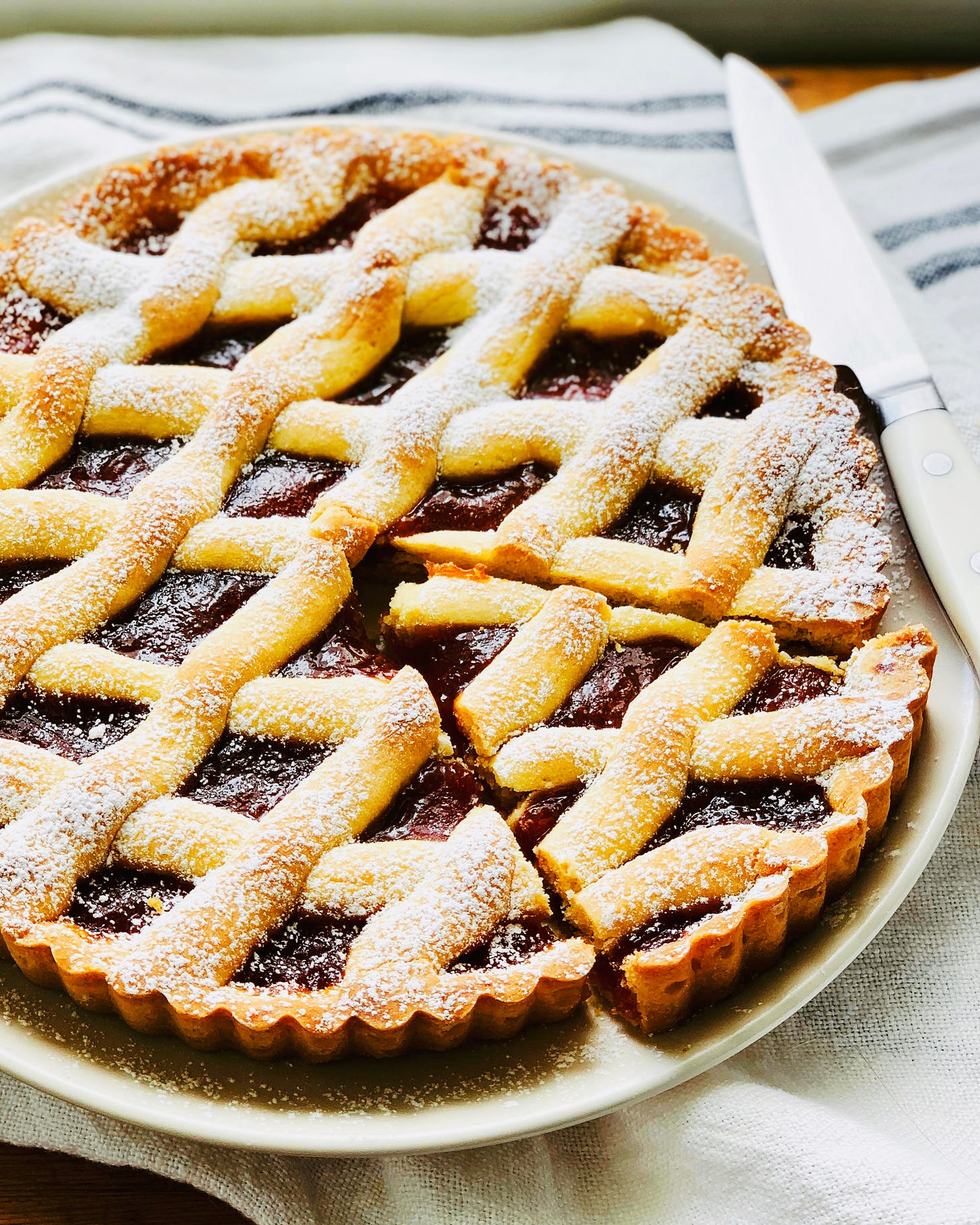Let’s Bake Crostata: The Italian Fruit Pie of Summer - No. 139
A warm welcome to our guest columnist, Domenica Marchetti of Buona Domenica!
I am thrilled to welcome Domenica Marchetti to Between the Layers. She writes Buona Domenica and is the author of seven books on Italian home cooking. Her eighth, "Williams-Sonoma Everyday Italian," will be published this fall. Today she shares how to bake a peach and spice crostata, the Italian pie of summer.
A slice of freshl…





